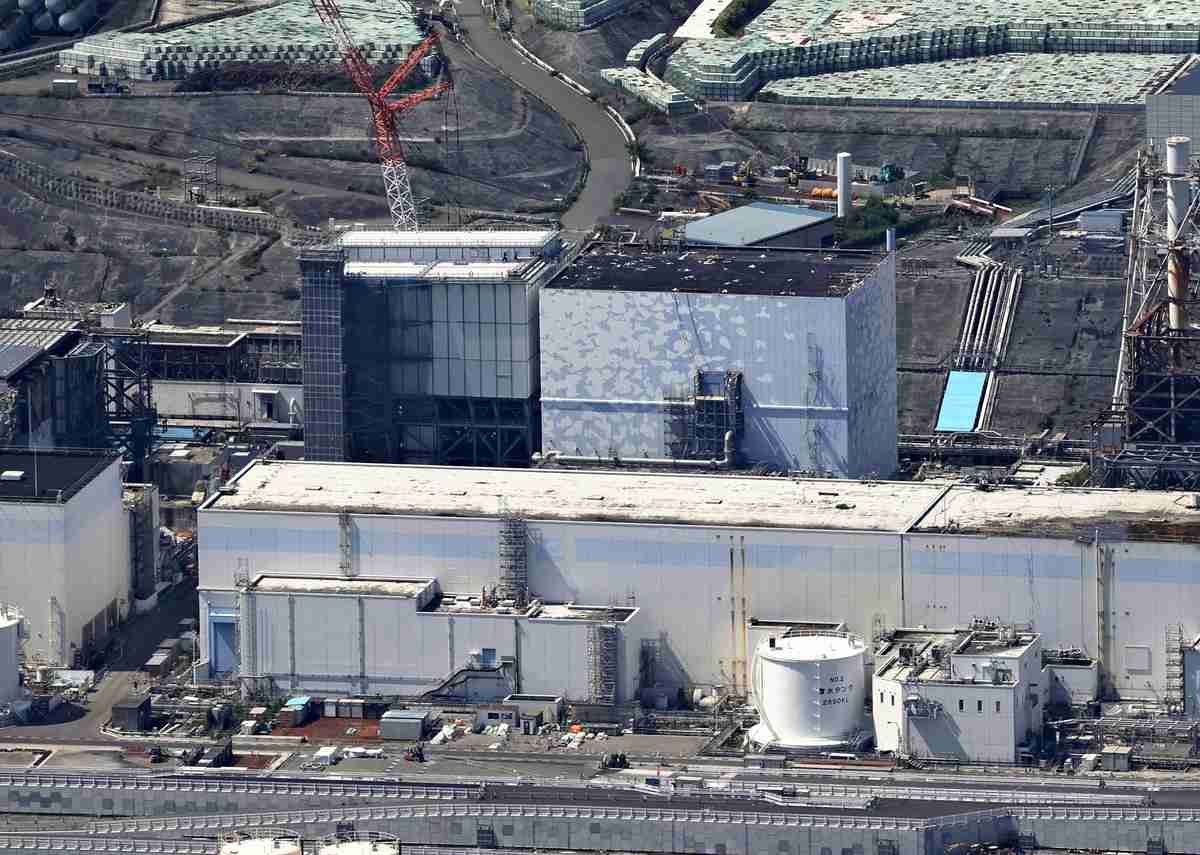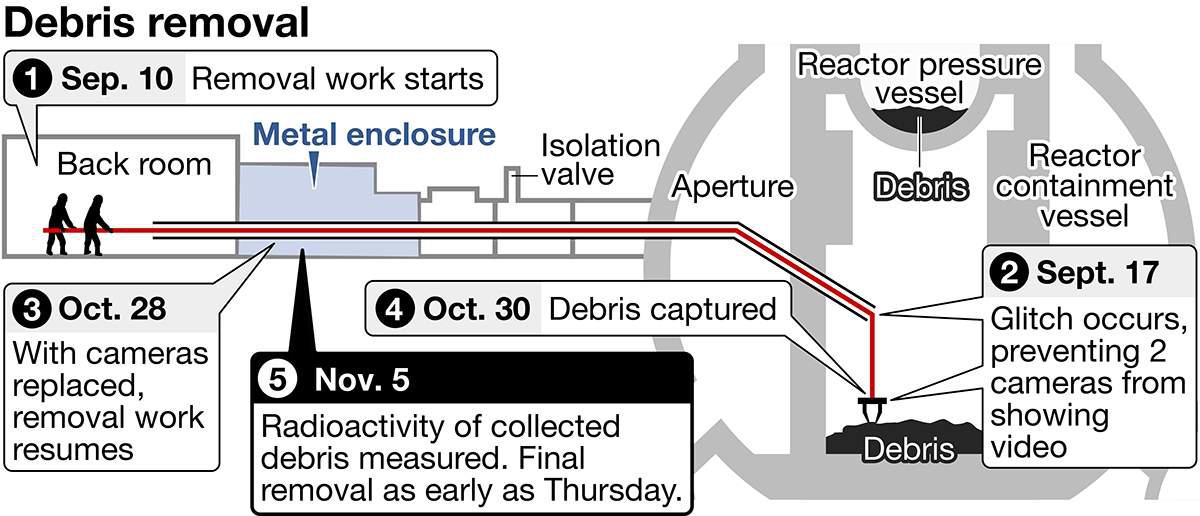
Tokyo Electric Power Company Holdings, Inc.’s Fukushima No. 1 nuclear power plant
16:44 JST, November 6, 2024
Tokyo Electric Power Company Holdings, Inc. decided Tuesday to remove nuclear fuel debris from the Fukushima No. 1 nuclear power plant as early as Thursday for analysis. The decision comes after debris was taken out of a containment vessel at the plant’s No. 2 reactor and its radiation level was found to be below a set limit.
Once the debris has been removed, it will be possible to analyze it for the first time since the 2011 accident.
The debris, part of a larger mass at the bottom of the containment vessel, was removed with a claw-like device in experimental work on Oct. 30. The debris is believed to be about 5 millimeters in size and weigh less than 3 grams.

According to TEPCO, the radiation dose of the collected debris measured Tuesday morning in a metal enclosure, designed to block radiation outside the vessel, was about 0.2 millisieverts per hour. To ensure radiation does not impact workers’ health, they are allowed a maximum exposure of 24 millisieverts per hour.
TEPCO was expected to place the debris in a small box in the metal enclosure Wednesday and, if all goes as planned, move the box into a temporary storage container outside the enclosure Thursday to complete the removal of the debris from the reactor.
The debris will be transported to the Japan Atomic Energy Agency’s Oarai Nuclear Engineering Research Institute in Ibaraki Prefecture, where it will have its composition and hardness analyzed in preparation for a full-scale removal of the debris.
During the nuclear accident, meltdowns occurred in the Nos. 1 to 3 reactors, generating an estimated 880 tons of debris when nuclear fuel mixed with the reactors’ structures.
"Society" POPULAR ARTICLE
-

M4.9 Earthquake Hits Tokyo, Neighboring Prefectures
-

Israeli Tourists Refused Accommodation at Hotel in Japan’s Nagano Pref., Prompting Protest by Israeli Embassy and Probe by Prefecture
-

M7.5 Earthquake Hits Northern Japan; Tsunami Waves Observed in Hokkaido, Aomori and Iwate Prefectures
-

Tsukiji Market Urges Tourists to Avoid Visiting in Year-End
-

M5.7 Earthquake Hits Japan’s Kumamoto Pref., Measuring Upper 5 Intensity, No Tsunami Expected
JN ACCESS RANKING
-

Tokyo Economic Security Forum to Hold Inaugural Meeting Amid Tense Global Environment
-

Keidanren Chairman Yoshinobu Tsutsui Visits Kashiwazaki-Kariwa Nuclear Power Plant; Inspects New Emergency Safety System
-

Imports of Rare Earths from China Facing Delays, May Be Caused by Deterioration of Japan-China Relations
-

University of Tokyo Professor Discusses Japanese Economic Security in Interview Ahead of Forum
-

Japan Pulls out of Vietnam Nuclear Project, Complicating Hanoi’s Power Plans























